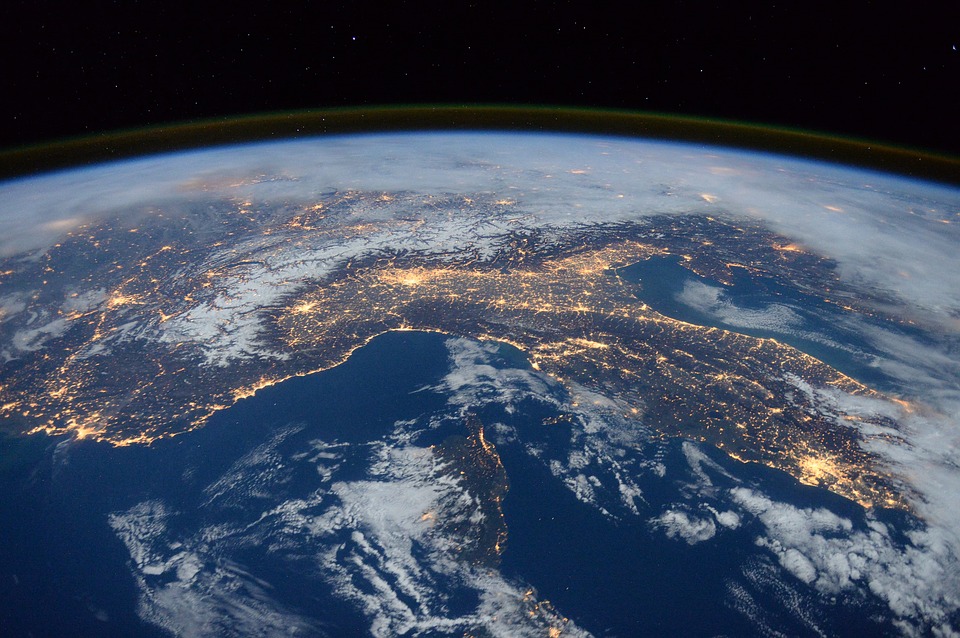The doom delusions of central planners and population “experts” are well documented and thoroughly exposed, ranging from the early pessimism of Rev. Thomas Robert Malthus to the more recent predictions of Paul Ehrlich.
Population growth is something we needn’t fear, and regardless, it’s likely to begin its reverse within the near future, as increasing global prosperity continues to correspond with decreasing global birthrates (this inspires fears of its own).
Given that striking reality, the doomsday soothsayers have shifted their arguments accordingly, warning instead of a future wherein capitalism consumes nature and humanity, enticing the public into ever more rapid and vicious cycles of parasitic consumerism.
“Today’s warnings of impending ecological collapse mostly focus on rising consumption, not population growth,” writes Ted Nordhaus in a recent article for Aeon. “As many now acknowledge, our social biology might not function like protozoa, but capitalism does. It cannot survive without endless growth of material consumption.”
But while the argument may at first appear new or insightful, the underlying myths and subsequent lessons remain relatively the same. Just as the misguided fears about population growth were founded in a static view of humanity, fears about capitalism are rooted in a static view of the market economy and the environments that its participants inhabit and transform.
As Nordhaus explains, a historical assessment of various market innovations and developments inspires plenty of optimism, not only about the unforeseen potential of the human person, but also (and in turn) about the true breadth and depth of the Earth’s so-called “carrying capacity”:
The long-term trend in market economies has been towards slower and less resource-intensive growth. Growth in per-capita consumption rises dramatically as people transition from rural agrarian economies to modern industrial economies. But then it tails off. Today, western Europe and the US struggle to maintain 2 per cent annual growth…
For decades, each increment of economic growth in developed economies has brought lower resource and energy use than the last. That’s because demand for material goods and services saturates. Few of us need or want to consume more than 3,000 calories or so a day or live in a 5,000-square-foot house. Many Americans prefer to drive SUVs but there is little interest in hauling the kids to soccer practice in a semi-truck. Our appetites for material goods might be prodigious but there is a limit to them.
Even so, that doesn’t necessarily mean we won’t exceed the planet’s carrying capacity. Some environmental scientists claim that we have already surpassed the Earth’s carrying capacity. But this view is deeply ahistorical, assuming carrying capacity to be static.
In fact, we have been engineering our environments to more productively serve human needs for tens of millennia. We cleared forests for grasslands and agriculture. We selected and bred plants and animals that were more nutritious, fertile and abundant. It took six times as much farmland to feed a single person 9,000 years ago, at the dawn of the Neolithic revolution, than it does today, even as almost all of us eat much richer diets. What the palaeoarcheological record strongly suggests is that carrying capacity is not fixed. It is many orders of magnitude greater than it was when we began our journey on this planet.
Such evidence speaks to the promise of innovation and creativity that a free and open market economy helps facilitate. But again, the primary driving force behind it remains the same: human persons with dignity and the creative capacity to not just take, but also make.
This requires a faith of its own, to be sure, whether in imperfect individuals themselves or the imperfect market mechanisms for sorting out the good from the bad. It also requires plenty of hard work and diligence, whether in raising and empowering free and virtuous people or preserving the cultural institutions that help protect our freedoms and facilitate the corresponding collaboration and exchange.
But given the historical record highlighted by Nordhaus, we see that it’s a faith founded resounding evidence of a rather striking phenomenon. Further, it’s propelled by an optimism that rejects the zero-sum mythologies about human relationships and removes the idols of consumerism from the prominence of their pedestals. Through such a view, at the very least, we are viewing humans as they actually are.
“Viewing humans in the same way that we view single-celled organisms or insects risks treating them that way,” Nordhaus writes. “….Threats of societal collapse, claims that carrying capacity is fixed, and demands for sweeping restrictions on human aspiration are neither scientific nor just. We are not fruit flies, programmed to reproduce until our population collapses. Nor are we cattle, whose numbers must be managed.”
We were created in the image of a creator-God to be producers and gift-givers—sharing, exchanging, collaborating, and innovating alongside the grand family of humankind. We’ve still only partially stepped into that ultimate calling, and there’s plenty more to come.
“To understand the human experience on the planet is to understand that we have remade the planet again and again to serve our needs and our dreams,” Nordhaus concludes. “Today, the aspirations of billions depend upon continuing to do just that. May it be so.”
